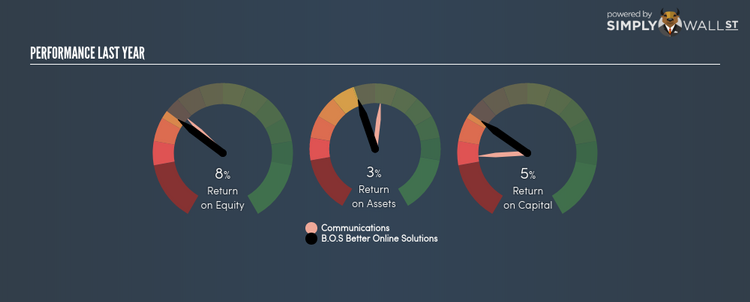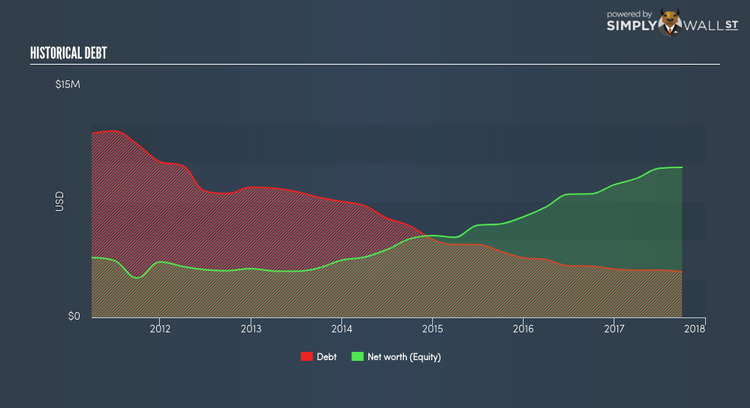Why BOS Better Online Solutions Ltd (NASDAQ:BOSC) May Not Be As Efficient As Its Industry

BOS Better Online Solutions Ltd (NASDAQ:BOSC) delivered a less impressive 7.50% ROE over the past year, compared to the 8.66% return generated by its industry. An investor may attribute an inferior ROE to a relatively inefficient performance, and whilst this can often be the case, knowing the nuts and bolts of the ROE calculation may change that perspective and give you a deeper insight into BOSC’s past performance. I will take you through how metrics such as financial leverage impact ROE which may affect the overall sustainability of BOSC’s returns. View our latest analysis for B.O.S Better Online Solutions
Breaking down ROE — the mother of all ratios
Return on Equity (ROE) weighs B.O.S Better Online Solutions’s profit against the level of its shareholders’ equity. For example, if the company invests $1 in the form of equity, it will generate $0.08 in earnings from this. Generally speaking, a higher ROE is preferred; however, there are other factors we must also consider before making any conclusions.
Return on Equity = Net Profit ÷ Shareholders Equity
ROE is measured against cost of equity in order to determine the efficiency of B.O.S Better Online Solutions’s equity capital deployed. Its cost of equity is 11.80%. Since B.O.S Better Online Solutions’s return does not cover its cost, with a difference of -4.30%, this means its current use of equity is not efficient and not sustainable. Very simply, B.O.S Better Online Solutions pays more for its capital than what it generates in return. ROE can be split up into three useful ratios: net profit margin, asset turnover, and financial leverage. This is called the Dupont Formula:
Dupont Formula
ROE = profit margin × asset turnover × financial leverage
ROE = (annual net profit ÷ sales) × (sales ÷ assets) × (assets ÷ shareholders’ equity)
ROE = annual net profit ÷ shareholders’ equity

Basically, profit margin measures how much of revenue trickles down into earnings which illustrates how efficient the business is with its cost management. Asset turnover reveals how much revenue can be generated from B.O.S Better Online Solutions’s asset base. The most interesting ratio, and reflective of sustainability of its ROE, is financial leverage. Since ROE can be artificially increased through excessive borrowing, we should check B.O.S Better Online Solutions’s historic debt-to-equity ratio. At 30.42%, B.O.S Better Online Solutions’s debt-to-equity ratio appears low and indicates that B.O.S Better Online Solutions still has room to increase leverage and grow its profits.

What this means for you:
Are you a shareholder? BOSC’s below-industry ROE is disappointing, furthermore, its returns were not even high enough to cover its own cost of equity. However, investors shouldn’t despair since ROE is not inflated by excessive debt, which means BOSC still has room to improve shareholder returns by raising debt to fund new investments. If you’re looking for new ideas for high-returning stocks, you should take a look at our free platform to see the list of stocks with Return on Equity over 20%.
Are you a potential investor? If you are considering investing in BOSC, basing your decision on ROE alone is certainly not sufficient. I recommend you do additional fundamental analysis by looking through our most recent infographic report on B.O.S Better Online Solutions to help you make a more informed investment decision.
To help readers see pass the short term volatility of the financial market, we aim to bring you a long-term focused research analysis purely driven by fundamental data. Note that our analysis does not factor in the latest price sensitive company announcements.
The author is an independent contributor and at the time of publication had no position in the stocks mentioned.
